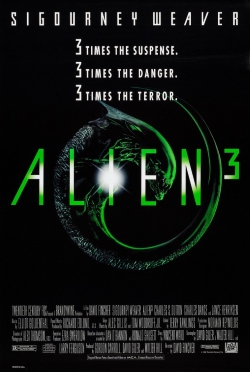GeekTyrant Presents: Director of the Month: David Fincher - The Beginning

That is right fellow soldiers, we here at GeekTyrant have decided to pay tribute to our favorite directors. We have all seen what the critics and the biographers have said about these Captains of the movie industry. I feel that they get the facts straight, but there is no emotion to it. We feel that they deserve more of a fan tribute. We will give all sides of the story, good and bad, likes and dislikes. You deserve it and they deserve it. So we will start with a little bio.
David's life as a filmmaker started when he was eight. The movie that inspired him to start his film career was the 1968 film Butch Cassidy and The Sundance Kid. After graduating from High School, David took a job loading camera's and doing other hands-on work for John Korty's Korty Films. After this job, David took a job with Industrial Light and Magic in 1980. While at ILM he worked on a little film called 'Return of The Jedi', his title was assistant cameraman: miniature and optical effects unit.
Fincher left ILM in 1984 and proceeded to do some commercials and music videos. He did videos for artist like Madonna (Vogue and Express Yourself), George Michael, Aerosmith, Paula Abdul, the Rolling Stones (Love is Strong, which he won a Grammy for). As a lot of music directors do, Fincher made the transition to filming movies.
Fincher was given the opportunity to film Alien 3. While enthused to be filming, he was quickly disillusioned with the process when the movie studio kept giving him "suggestions" on how he should film the movie. He was flooded with problems. There were sets already made for the movie, but they were from a previous script that they were no longer using. However, they didn't want to waste money, so the studio made him use the sets in the movie he was filming. Things eventually got so bad with the filming of the movie that Fincher didn't even participate in the editing of the film. When he was done with film, he feared that he would never work in films again.
Which leads us to our next installment in David Fincher month: Seven. I will go over the ins and outs of the film Seven. How he got started, what went on behind the scenes. So, return back to find out some more information on one of our favorite directors David Fincher. If you like this new feature, let us know what you think. Until then, here is some behind the scenes trivia that goes along with Alien 3. Brought to us by IMDB. Enjoy:
- One possible idea for the film included a chest-burster coming out of Michael Biehn's character, Hicks. A replica of the actor with his chest torn open was created, but after Biehn discovered this, he threatened to sue the producers for using his likeness without his consent, and the idea was dropped. Later, the producers paid him to use his picture at the beginning of the film for the computer sequence. Apparently he received more money for use of this one image than for his role in Aliens (1986).
- With the release of the definitive Alien Quadrilogy on DVD in 2004, 20th Century Fox proffered David Fincher the proverbial olive branch and asked him to assemble and comment on his own Director's Cut. Fincher declined. He was the only one of the four Alien directors to refuse to have anything to do with the project.
- The concept by Vincent Ward based on which the movie was green-lighted involved a wooded planet and a group of monks who thought they were living in post-apocalyptic dark ages, and had a middle-ages lifestyle. The group refused all kinds of modern technology, and when Ripley and the alien crash-land on Earth they would blame Ripley for the alien attacks. Ripley was to be impregnated by the alien "the old-fashioned way" rather than through a face-hugger, and therefore being impregnated with a human-alien hybrid. According to the storyboards, she would dream of half human-half alien hybrids. Other storyboards included horse-alien and sheep-alien hybrids. Ward left the project after the producers insisted that he change the monks to prisoners and drop the wooded planet idea.
- Some of H.R. Giger's design for the film involved a puma-like alien with claws. The producers also instructed him to do more sexy designs, so he created a drawing of an alien, which, in close view, had the lips of a woman. One of his ideas involved the alien kissing the victims and killing them that way (an idea that was later used in the movie Species (1995) where the main creature was also designed by Giger).
- The original budget was $45 million which included Sigourney Weaver's fee of $5.5 million. The budget soon spiraled however, with first Renny Harlin and then Vincent Ward both leaving the project before novice feature film director David Fincher came on board. Extensive last minute re-shoots - especially after the finale was deemed to be too similar to Terminator 2: Judgment Day (1991) - ultimately pushed the budget into the region of $65 million.
- $7 million had been spent on sets that were never used thanks to the ever-changing script before filming had even started.
- In the original drafts of the script there was no Ripley.
- At one point, David Fincher was denied permission by the film's producers to shoot a crucial scene in the prison understructure between Ripley and the alien. Against orders, Fincher grabbed Sigourney Weaver, a camera and shot the scene anyway. This scene appears in the final cut.
McMurphy Out!